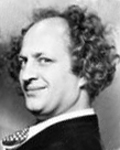Doug,
My opinion is you did much better with the settings used here:
http://www.internetage.ws/cpapdata/dsm- ... 1oct08.pdf
Only like 3 events logged, report shows 1 central apnea, 1 obstructive hypopnea and 1 central hypopnea.
The report from last night shows mainly central events. Keep in mind the central events can be caused by breathing or just show up
during transitional stage changes. Both not really bad just the one on Oct had fewer events.
Your next question probably will be how can I tell the difference between the obstructive and central events? especially the hypopnea?
If you magnify the report and align and follow the events down to the Patient Triggered breathing you will see some events caused BPM to kick in and others did not. Since on that machine BPM mode ONLY controls central dysregulation or central events, dips will be seen on that line for each central event. The obstructive events won't cause it to go to BPM mode (in which case you have it set for Auto).
The important thing to know about that is they are central and not go chase them with increased pressure thinking they were obstructive.
There are a few blips on that Patient triggered line with no events corresponding to them above, I suspect the machine is gaining spontaneous info and testing BPM mode sorta like the AutoCPAP circuit on the Auto.
I don't know how you feel between those two, but going by the raw numbers I'd say these settings work better for you:
EPAP=11
IPAP MIn=14
IPAP Max=20
BPM=Auto
------------------------------------
Avg. working peak IPAP = 16.0
Avg. BPM seen 15.6
Patient Triggered Breaths=99.6
Can't get much better than that, volumes are up, AHI=2.0 and I would call that one success. If it changes from that
it could be due to allergies or something else.
someday science will catch up to what I'm saying...












